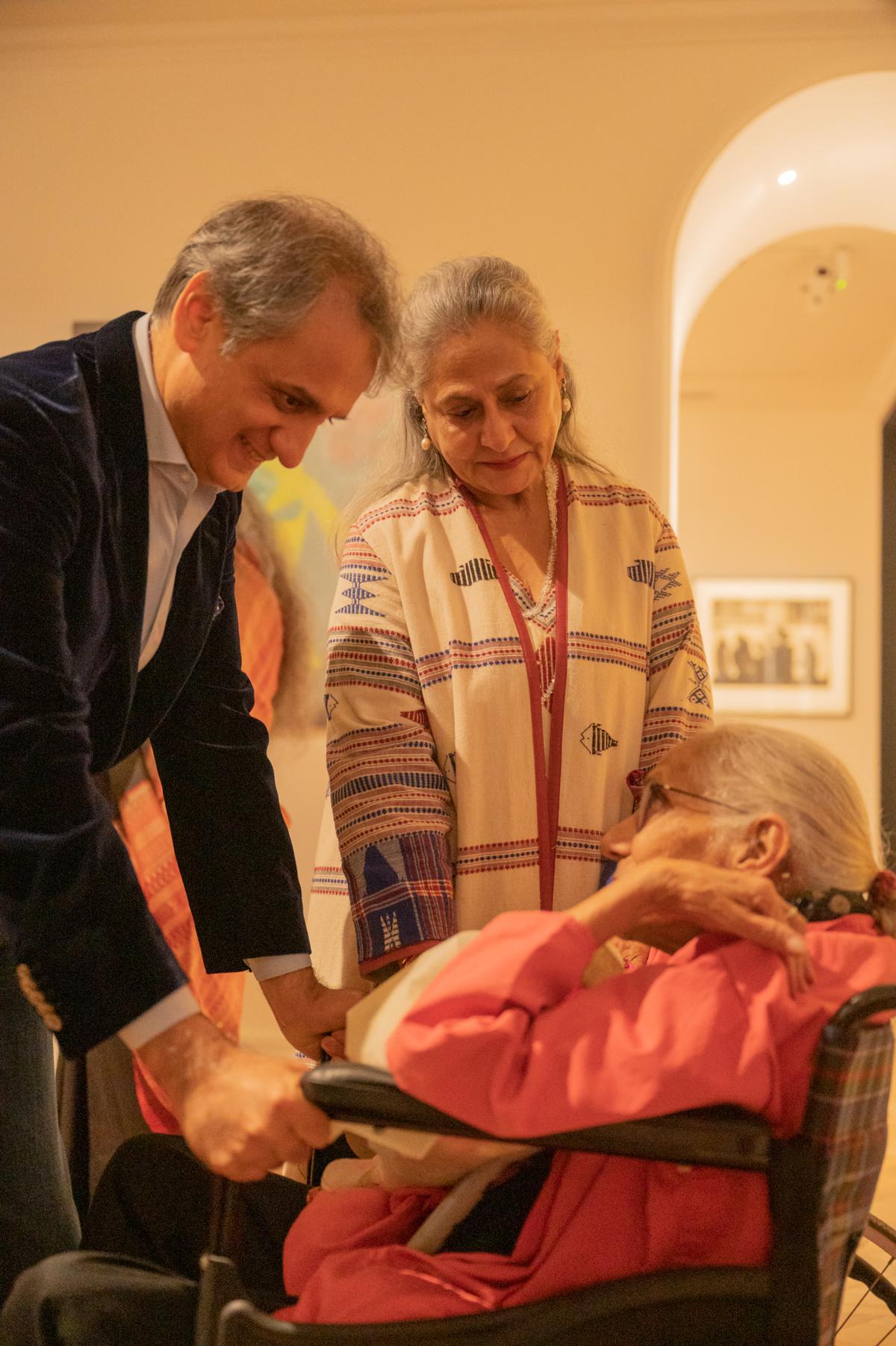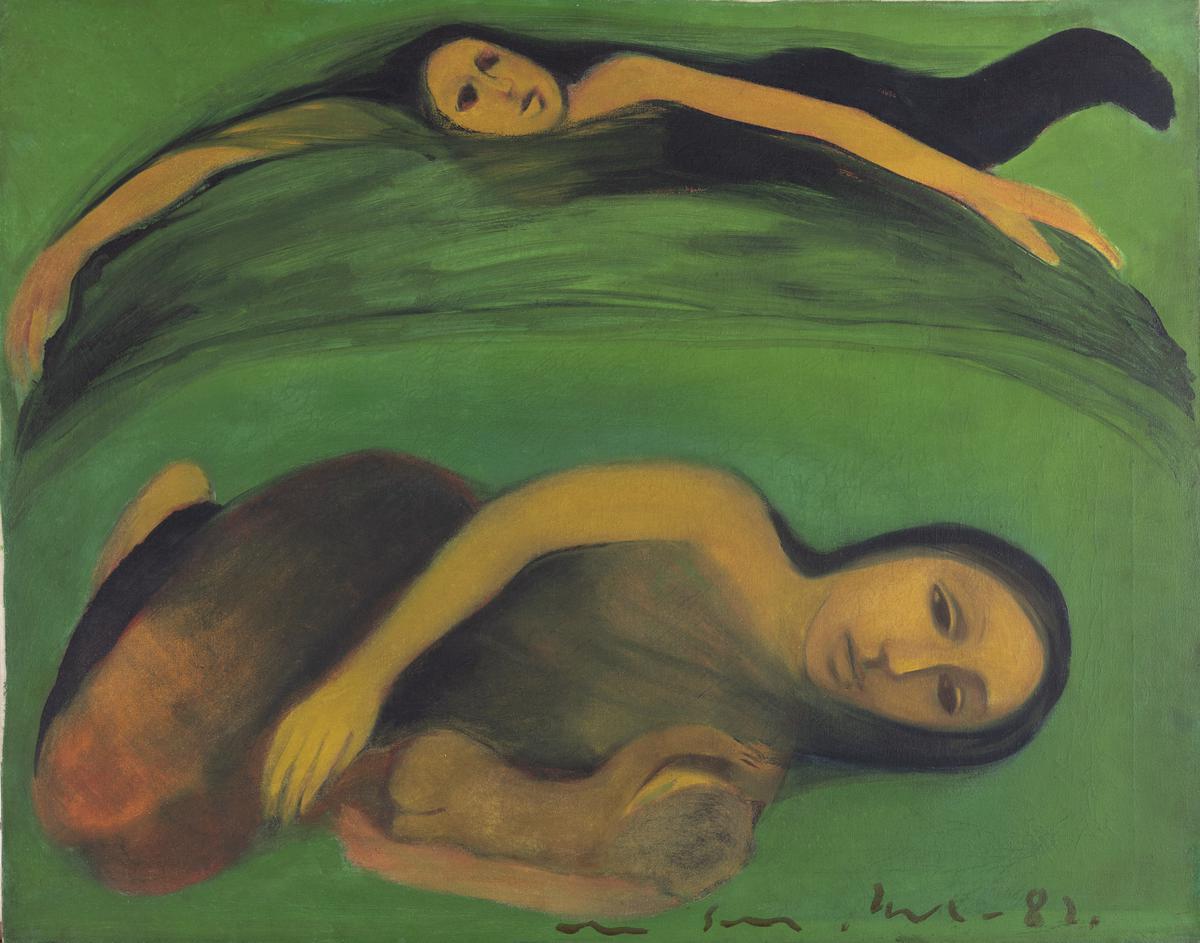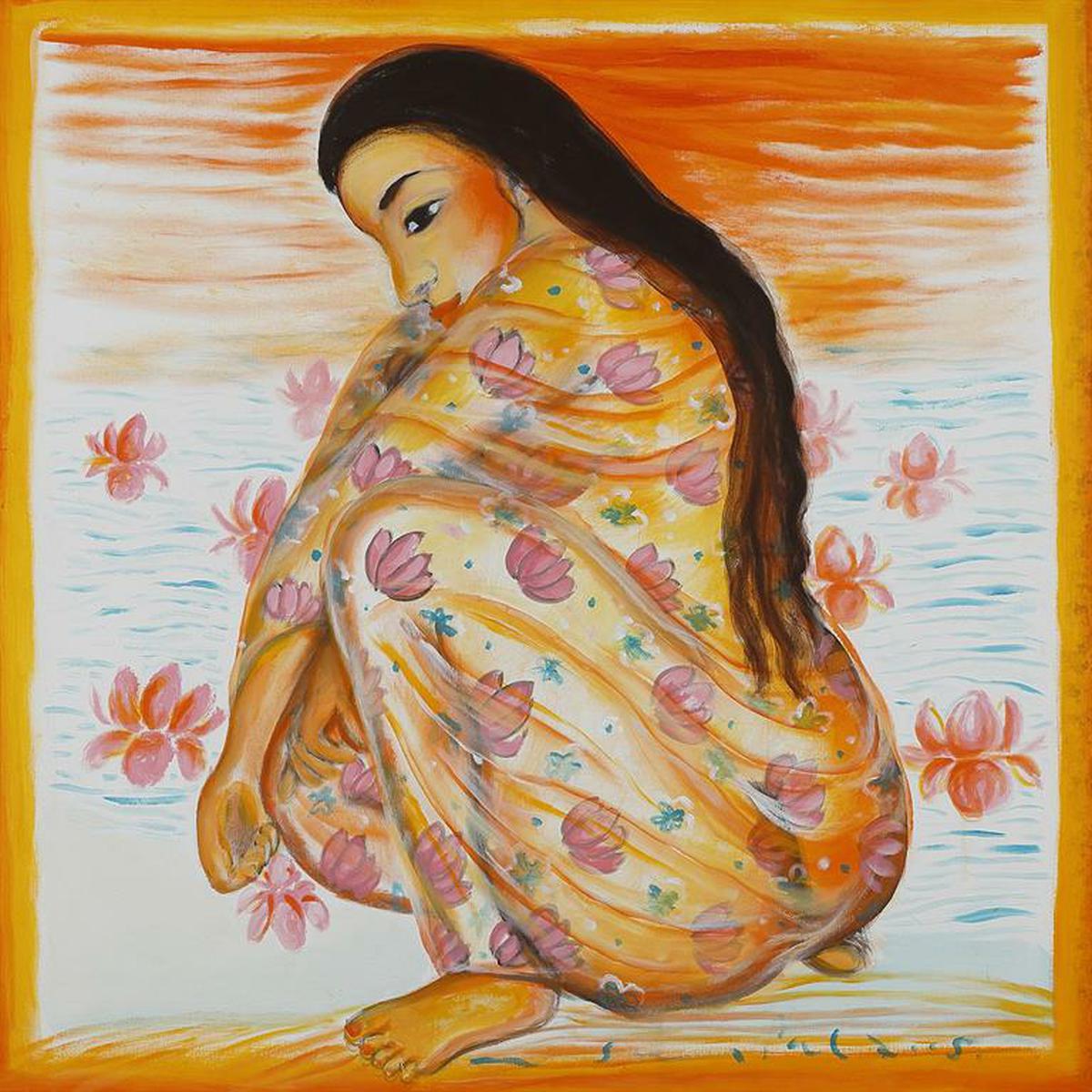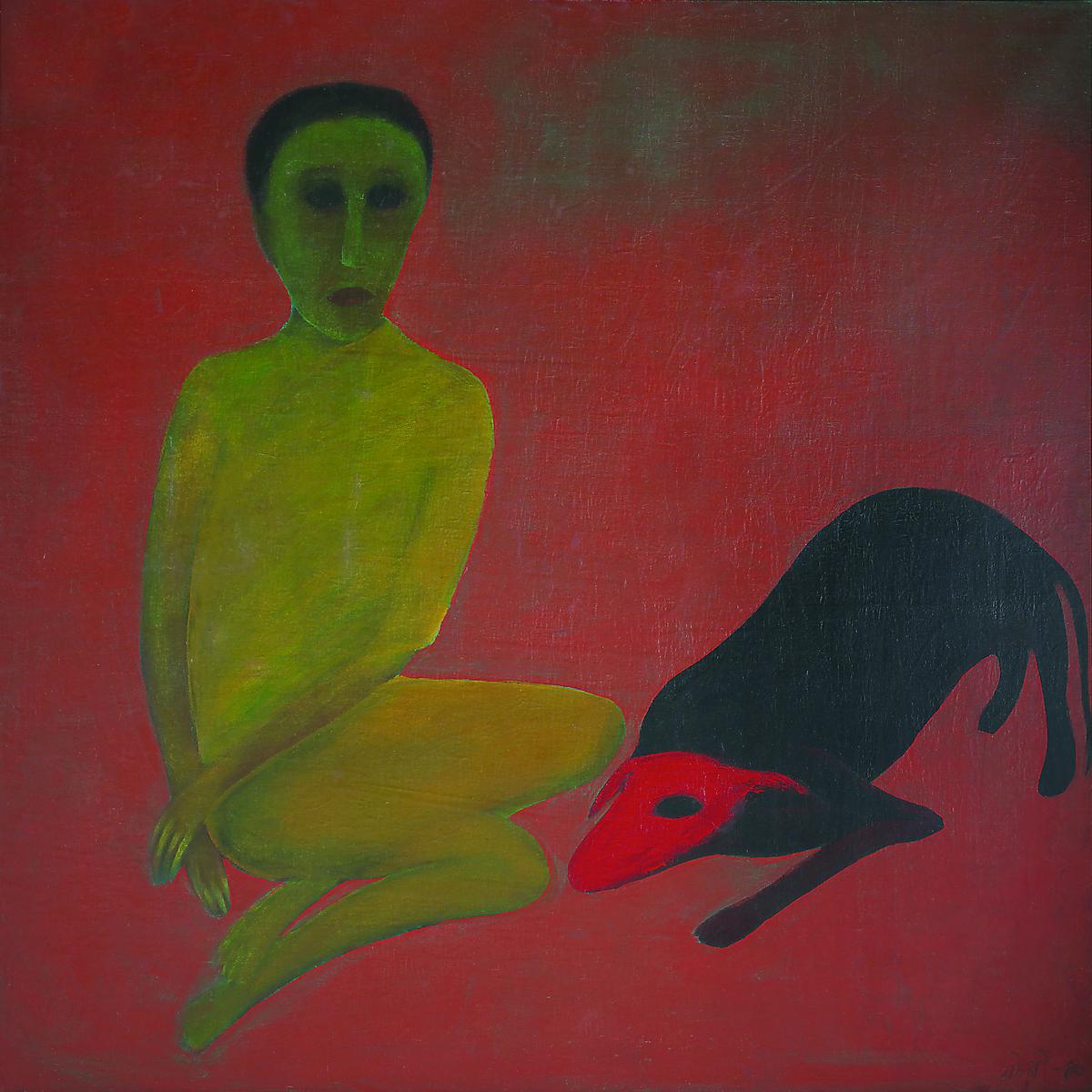Gogi Saroj Pal wielded her art to resist patriarchy and oppression.
Gogi Saroj Pal often invited me to her studio at East of Kailash, New Delhi, to show her new paintings and sculptures. She would spoil me with snacks and coffee and lunch. And she would talk passionately about her new projects as her studio room filled up with cigarette smoke.
Pal, who passed away on January 27 at the age of 79, often expressed her angst towards oppression; she supported young talent and adored her group of protégées and close friends.

Gogi Saroj Pal (seated) is greeted by actor Jaya Bachchan and director of DAG, Ashish Anand (left).
Seeing her lying listless among red rose petals, white jasmine and marigold flowers at the Lodhi Road Crematorium was jarring: it was hard to believe that we had lost this spark of a woman who painted large, lyrical artworks, of women surrounded by the natural world. She wielded her art to resist patriarchy and oppression, using a variety of media, from gouache, oil, ceramic, graphic print, to jewellery, photography and weaving.
Maverick, chimeric
I shook hands with her grief-stricken husband Ved Nayar, also an eminent painter. He was unable to say even a word but her sister, who bears a striking resemblance to Pal, met and accepted condolences from friends and protégées. “Gogi ma’am went so quietly; I have always associated her with a powerful voice, speaking about the art world and critiquing it so vehemently,” said Anjum Khan, a young painter who was her very dear student, almost like the child she never had.
Ashish Anand, director of Delhi Art Gallery (DAG), said he would “miss her terribly”. Kishore Singh, head of exhibitions and publications at DAG, said: “I was fortunate to be able to curate Gogi’s retrospective for DAG during which period I not only came to know her measure as an artist, I came to know her as a person: maverick, chimeric, humorous, full of warmth, and ready to share stories and endless cups of tea in her cigarette smoke-filled studio. I will miss her ability to laugh at all times, mostly at her own foibles.”



Gogi Saroj Pal’s paintings.
Shukla Sawant, an artist and theoretician, who recalled Gogi’s time at the Garhi Lalit Kala Artist Studio in East of Kailash, said, “Gogi inspired a whole generation of artists who came of age in the 1980s. Feisty and completely unorthodox in her views, she spoke with absolute forthrightness.”
Pal was from a small town, Neoli in Uttar Pradesh. She did her Bachelor’s of Arts at the College of Art in Banasthali Vidyapith, Rajasthan, as well as at the College of Art in Lucknow. She went on to do a postgraduate diploma at the College of Art, New Delhi.
Pal, in the eyes of art restorer Priya Kapoor, was one of the few artists who used gouache to perfection. “Gogi’s layering technique was so time-consuming and impossible to copy. Her perception of women, feminism, her depiction of Kali with multiple hands, referred to women multitasking and how empowered they really are,” said Kapoor.
Gogi’s milestones
In the span of her career, Gogi Saroj Pal had nearly 30 solo shows.
She won a number of awards including the National Art Award of the Lalit Kala Akademi.
She participated in a large number of group shows in India, Yugoslavia, Germany, France, Cuba and Japan among others.
Her works are displayed in museum collections in Japan, Poland and Amsterdam.
The writer is a critic-curator by day, and a visual artist by night.